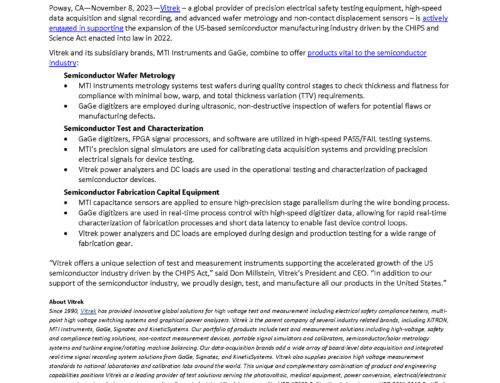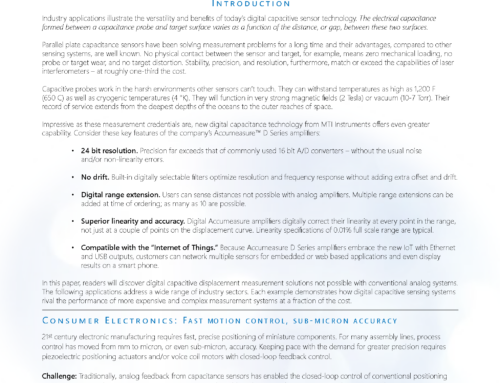
Gap Monitor Keeps Wind Turbines Running
System helps operators minimize downtime and protect against catastrophic failure

Introduction
Wind turbine production has been steadily increasing to meet growing demand for renewable energy. As power outputs and the number of installations climb, maintenance becomes ever more critical.
Operators want to minimize downtime and protect against catastrophic failure. The ability to predict when maintenance will be required can go a long way to ensure these goals are met.
Challenge
A leading manufacturer of wind turbine power generators approached MTI for critical gap monitoring sensors. Specifically, the company wished to monitor the gap between stator coil and rotating magnets at selected radial locations. If the gap, which measures approximately 10 mm, grows too large, efficiency can drop. Worse troubles happen if the gap shrinks. Too small a gap could lead to the magnets physically scraping against the stator poles, destroying the turbine.
In addition to achieving their stated objective, the sensors needed to withstand harsh environments, last ten years or more, and function in high magnetic fields. Long sensor cable lengths would also be required for routing to the control panels.
Solution
MTI Instruments fulfilled these requirements with a sensor system comprising three components: a passive capacitive displacement probe; a special interconnect cable designed to reduce magnetic loop pickup; and a Digital Accumeasure capacitive amplifier.

MTI offers a range of probes that can be used for handheld as well as fixed gap applications. Internet of Things (IoT) friendly, the company’s Digital Accumeasure amplifiers can be networked via Ethernet




